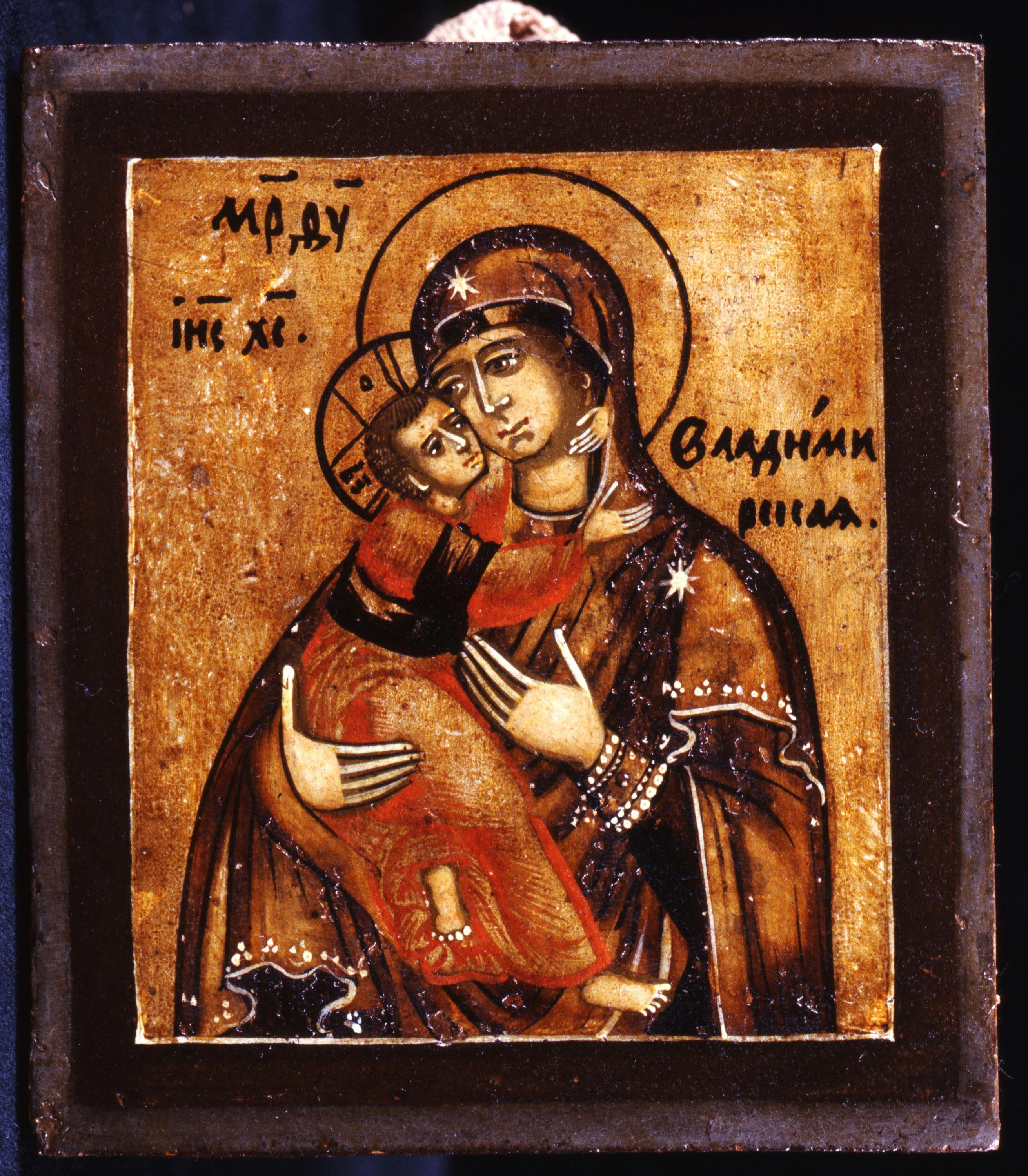The Virgin of Vladimir
Central Russia
The work is an 18th century replica of one of the most venerated icons in Russia, known as the Virgin of Vladimir, created in Constantinople in the 12th century, but sent to ancient Rus’ where it was placed in the cathedral of the female monastery in Vyšgorod in 1130. In 1155, Prince Andrej Bogoljubskij took it with him to the city of Vladimir, where the Dormition Cathedral was built specially to house it. In 1395 it was transferred to Moscow where it was invoked to protect the city from the attacks launched by the Mongol-Tatar armies. The icon, still kept in the Russian capital today, presents a unique iconography again presented in the work in the Uffizi Gallery: the so-called Eleousa or Madonna of tenderness, a very common type of iconography from the 12th century on, in which the Virgin and Child are depicted in a tender embrace, their cheeks touching. The Virgin’s countenance is melancholic, a sign of her awareness of Christ’s later suffering.
The icon shares some characteristics with others in the Florentine collection, such as those portraying St. Joachim and St. Anne (inv. 1890 no. 9328) and St. Michael (inv. 1890 no. 9330), distinguished by the use of a limited range of colours and a rather rough application technique, albeit not without details, such as the decoration of the Virgin’s veil.
